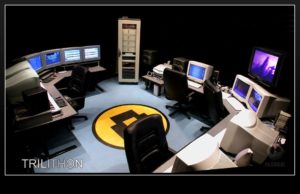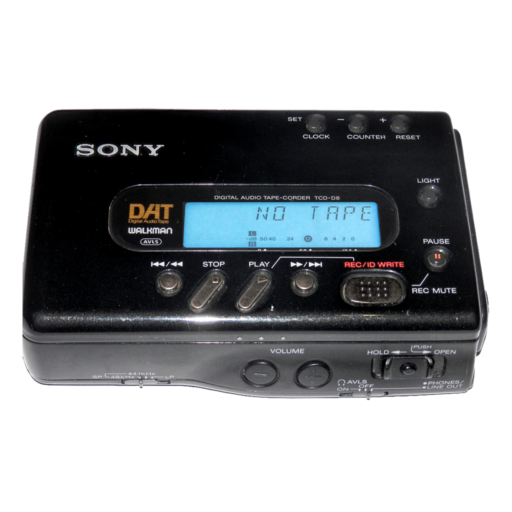


Trilithon Single Tracks
1 – Trilithon – Adagio 4 Peace 12:43
End of the 90’s / Source: Offered by the artist. / “This track is nothing but an ode to music in general and therefore a collage of different tracks that are milestones in musical history (the path I have taken down music lane that is 🙂 and therefore had to include Tomaso Albinoni’s ‘Adagio‘ (one of the worlds most loved funeral tracks) – The KLF’s ‘What Time Is Love‘ (because of it role of porting the chords of Jesus Christ Superstar into the electronic music scene) – and morph it into Goa trance and back again (see further comments in the notes). The entire track is performed using synths and samplers btw – so no audio recording is being used (except for sampled content), and the tracks of Albinoni and KLF were re-created (with the consent of KLF btw!!). As a matter of fact, this track was created as a farewell to the period of music creation for me and intentionally addresses many musical styles that were of influence to me (except minimal music), and as such also includes a big smile towards the early house sound. Meanwhile it illustrates my continuous struggle to limit myself to just one style of music. I think that the separation of music into styles is in many ways a restriction that does not enrich people’s fantasy and limits one’s creative drive, and I have always tried to prove it is possible to mix styles into one musical expression.. mostly in vain :-)”. [Huib Schippers]
2 – Trilithon – Les Coeurs Infinis (Final Version) 6:04
90’s / Source: Offered by the artist. / The French title means in English “The Infinite Hearts” / This track is based on a mixture of Italo-Disco and Eurobeat elements.
3 – Trilithon – One World One Future (Extended) 13:09
1999 / Source: Offered by the artist. / Played at the Loveparade 2002 / This version is almost twice the length of the “Trust In Trance Records” release and 143 BPM (instead of 138 BPM for the released track). It contains an extended introduction and prolonged main sequences, as well as a noticeable amplified variation of tone in the melodic part starting at 5:40.
4 – Trilithon – Pool3 Preliminary 10:13
90’s / Source: Offered by the artist.
5 – Trilithon – Syzygy 3:50
90’s / Source: Offered by the artist.
6 – Trilithon – Till Death 8:04
90’s / Source: Offered by the artist. / “This is a track that I consider as one of my best. I made it especially for my wedding ceremony. It was completed in a short video clip with the official “I DO” (Dutch “Ja”) that then concluded my marriage with my wife. The chord scheme of ‘Till Death’ is somewhat inspired by the opening song of the minimalistic musical ‘Satyagraha‘ (by Philip Glass)”. [Huib Schippers]
7 – Trilithon – Transition 646 7:44
90’s / Source: Offered by the artist. / “This track has a minimal (Philip Glass) scheme of 6/4 combining 160 BPM (typical for hardcore and Japanese Eurobeat music) with church organ and synth. People who are familiar with the music of the album “Koyaanisqatsi” by Philip Glass, will probably recognize some key elements that this track shares with the title track of that album, such as the pallet of sounds (but then with a more ambient infill), chord schemes and rhythm patterns (blocks of 6 being repeated)”. [Huib Schippers]
Pulse Paradise Single Tracks
8 – Pulse Paradise – Don’t You Cry 4:02
90’s / Source: Offered by the artist.
9 – Pulse Paradise – If Only I Could Be With You 6:27
90’s / Source: Offered by the artist.
Notes
• The artist offers some interesting insights as well as his definition and statement regarding the Goa Trance music: “I come (and these tracks come) from a time where the term GOA had hardly been invented yet and therefore I still had the freedom of style that does not exist anymore nowadays. The Goa trance style has now been defined within very small and narrow borders that should not be crossed without being loathed for it. Most of these tracks are in some way related to / derived from the same kind of philosophy that is the source of the process of creation of Goa trance tracks… which is: to make a combination of different musical styles and show that they are not different at all by creating harmony from the combination. Furthermore the typical Goa restrictions (create a harmony surrounding one single base tone – which overlaps with typical Indian traditional music composition rules) were first introduced to the main public in the musical “Jesus Christ Superstar” (by Andrew Lloyd Webber) and, more specifically, in the song ‘Overture’ (start theme of the musical) where the guitar plays the now so very typical Goa trance baseline used as a starting point for further composition. This exact baseline was later copied and used in the world hit ‘What Time Is Love’ from KLF. There too it plays the role of baseline during the entire song. Later I did the same trick again with songs like ‘Choice‘, ‘Prayer‘, ‘CMOS-K‘ (and derived tracks such as ‘One World One Future‘ and ‘Ameland – Isle Of Trance‘).
• “I would like to make another observation, as a kind of overview over the music I tried to make, in retrospect of the “genre Trilithon”. One key-characteristic of the music i tried to make / the most characteristic property of the music i chose to create, is repetition. Repetition is almost unavoidably generated by the tools used for electronic music creation. In music, repetition can be made in melody (classical music) and also in rhythm / percussion (African music) obviously. The ultimate melodic repetition is of course one that repeats just one tone (-> Indian and Arabic music, mostly originating from the shortcomings of mechanical instruments). So for someone who’s music is about repetition, the musical styles he can take his inspiration from, range from classical, to African (pop music), to Arabic (as long as the tuning is Western – due to limitation of our neural network and due to mix-mismatching considerations), to Indian (think of the repetitive nature of Indian Raga’s)… (So, musical styles and harmonies like they use in Chinese culture eg. fall outside of this spectrum… interestingly). Keeping the above mentioned in mind, it is not far fetched to combine classical with Indian harmonies, and provide these with some rhythm and repetitive elements that the electronic tools almost force you to use and that you (as a beginning “musician”) are happy with, because repetition is the easy way to go (compared to constantly creating new melodies for the entire length of the song) and it is more appreciated by the human brain, because we give it something to recognize.. which is (technically) the only thing our brain can do. Also my interest in (classical) minimal music (eg. by Philip Glass) can be very easily be explained this way. It consists of several sequences of repetitions in melody of different length, played by classical instruments (but why stop there? and why not explore more complex / other sounds), but has taken some more freedoms in respect to rhythm and measures that do “shake-up” many people who are hindered by their neurally fixed patterns. Hence it is not so strange that someone who is new to the process of music creation, end up walking the path that crosses the above mentioned musical styles… and that is what happened to me. And… as a sidetrack to this conclusion: It is not strange that the style that was later to be called GOA TRANCE was born out of the “limitations” of starting composers who use electronic (and software) tools to overcome their incapabilities of un-virtuosity, who are inexperienced in creating melodies and harmonies and therefore seek refuge in monotonically based compositions, especially when doing so, the product of those limitations starts to come “alive” and gains a truly new form of beauty, in which people can express themselves… And then, suddenly, a new style is born. In the beginning every new style is open for definition, but after a while the definition will narrow down the genre. This continous up till the moment that the style is too narrowly defined, after which it will have a diminishing audience. But, nowadays with the World Wide Web, even the smallest of audiences represents large groups of people, that could never have been formed into a “group” in the days of the record companies… so in the end… Napster was a very good thing for the music biz! For me on the other hand the appearance (or perhaps better a-peer-ance) of Napster was the main reason to stop my “musical career” in 2000. I had started doing some explorations in sound synthesis (my real origins) in the year 1986, but it was in the year 1995 that I switched from creating software and computer hardware, to full time music production. Five years later in 2000, in a timespan of just 1 year (1999-2000) the music business in the Netherlands (a country with a good infrastructure that enable the internet to gain in popularity very rapidly) was as good as dead due to the illegal downloading / sharing of music (made possible by peer-to-peer download software such as Napster). In 1998 there were more than 750 privately owned record labels in the Netherlands. In 2000 only a handful of those were left – (mostly the bigger companies). In the years after 2000 it had become very hard for an independent producer / composer to make a living out of music creation. Most of the composers i knew, have now found new careers, many have gone towards video / photography production. Perhaps due to the fact that video production also (technically) involves time-line editing (just like music production) and certainly due to the creative and narrative nature of both video and music production”. • The track ‘Ameland – Isle Of Trance’ was initially called ‘Ameland Beach Party’, “which was an ode to the Goa beach parties that were really going on at that time in Goa. Its title must have changed from the original intention to something more general. It turns out that most of my “Goa” tracks have been custom made for a friend of mine who actually lives on the island of Ameland and was a fan of arab-sounding-trance in general. Sometimes he managed to get these tracks (or shortened versions of them) out on a record. But I never kept track of them”.
• “The two Pulse Paradise tracks were never released and have not much to do with Goa, but are a side-track into soul and jazz, produced just as an experiment (because I never understood those styles). Still they have some Goa influences”.
• The 2001 pic of the futuristic Trilithon studio has been published together with a 2009 interview with Huib Schippers on spacesynth.net.
Contributors
• Info/notes/trivia/samples for all tracks by Huib Schippers, contacted by Cosmogenesis
